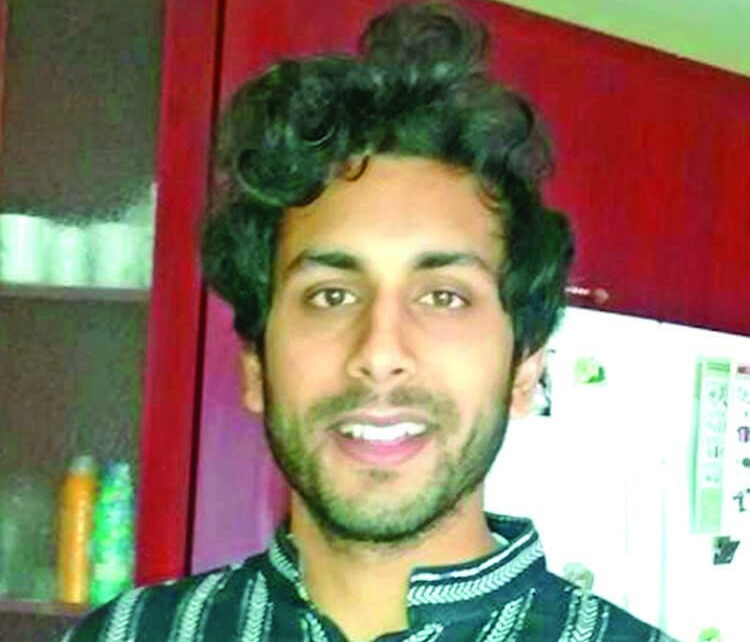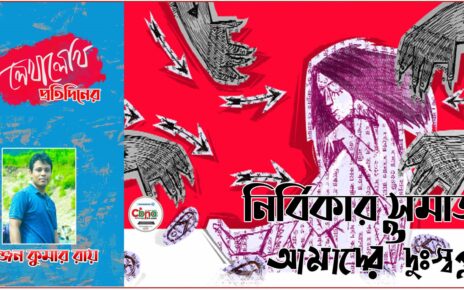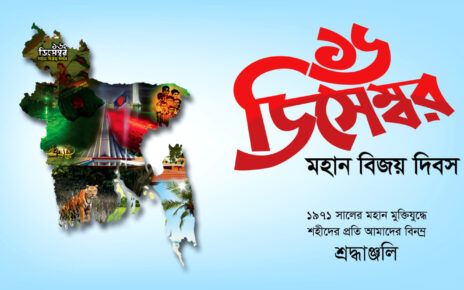One of the most successful, immediate, and visible uses of artificial intelligence (AI) has been in the field of Machine Translation (MT). Google Translate is almost a household name alongside the names of Facebook, Microsoft, DeepL, etc. The development of this technology is so rapid that within the next three years, according to an industry leader Ofer Shoshan, MT will occupy more than half of the global translation market.
Bangladesh is heavily dependent on global economy, especially as her foreign earnings are driven by garments and manpower export. As the country is striving to diversify its economy and said to be on the ramp toward the highway of development using digital technology, it must drive down the path of digital communication. Obviously, any such communication involves language first, and then translation for knowledge and technology transfer. Presumably, MT would play a vital role in the whole process of transformation in the future.
Bengali is the seventh most spoken languages in the world, with a native speaker of about 230 million people. Although it has gained some recognition through the declaration of UNESCO of 21 February as International Mother Language Day, technically it is still considered a Low Resource Language (LRL). As MT does not function well with LRLs, it is one of the most important challenges yet for MT to solve.
Recently, we have noticed some news reports regarding a move by the Ministry of Foreign Affairs to push the Bangla agenda further. Paradoxically, the government is said to be making some efforts to pursue the UN to have Bangla included in the list of official languages when the government has yet failed to implement a language policy at home and the use of Bengali at all levels of education, government, and society.
While there has been concern among scholars and the learned members of the civil society regarding the status and the use of Bengali, it does not seem to me the issue of MT is anywhere on the horizon of the policymakers. However, we must think about this issue at some point as we are crawling toward the dream of realizing a digital Bangladesh.
So, as part of my interest and education, I have recently talked about these issues with a young Bangladeshi-Canadian computer scientist but then thought it may be worth sharing with others as well.
—————–
Qudrate Khoda (QK): You are working in the field of AI and part of your research includes natural language processing. Although Machine Translation (MT) is not particularly your field of expertise, you have some interest about it. Besides, you speak several languages and have the experience of living in different cultures. So, I want to ask you some questions relating to Artificial Intelligence (AI) and MT.
Rivu Khoda (RK): No problem, I will try to share with you as much as I know about this subject.
QK: My first question is why or how did you become interested about AI when there were various fields and subjects in Computer Science?
RK: One of the primary factors that influenced my decision to pursue my career in AI is certainly the environment, the location and the period when I was educated in the field of computer science. When I was an undergraduate student, there was a growing interest both from the academia and the industry to invest heavily in research and applications of AI-related technologies.
In the last decade or so, Google, Facebook, Microsoft and RBC purchased start-ups, hired professors from universities based in Montreal, and started multiple research laboratories focusing on solving some of the major challenges in Machine Learning. This combined with a broader interest in entrepreneurship created a super Ecosystem that appealed feverously to the students in the field. There was a widely held perception that Montreal was at the centre of a worldwide technological movement, and that perhaps we could be a new Silicone-Valley.
Personally, I was working on several software projects and quickly realized that the limitations I noticed or the ideas that I had all required more intelligent solution: that algorithms did not offer reasoning capabilities out of the box. For instance, I wanted to have a wardrobe classifier that would take pictures of my clothing and automatically classify them according to meaningful categories or a bookmark sorting system that would intelligently organize bookmarks in library-like categories based on semantics. Attempts at these ideas made me realize that AI was certainly the direction to pursue as it would be the most promising solution to my problems.
QK: Ok, then, what do mean by AI?
RK: Artificial Intelligence is a simulation of what we consider intelligent behaviour in humans that is manifested by devices that are capable of computation such as robots, phones and our laptops. However, the criteria of what constitute artificial intelligence changes over time since our expectations of what can and cannot be done by these digital devices change as we interact with them.
It started with Allen Turing’s idea (also called a Turing Test):for example, if a computer can fool a human into believing that it is a human, by chatting or communicating with the human agent (say in a chat system like a messaging app), then we can state that we have indeed solved artificial intelligence. Fifty or so years later, there are cases where we have systems that can make people believe that they are indeed chatting or communicating with a real human. However, we also have realized that being able to deceive people in a conversation as opposed to truly understanding and having a conversation are two distinct problems. Thus, we know that deception is not a sufficient condition for human-like intelligence that we would like to mimic.
QK: Can you talk a little more about the Turing Test then?
RK: Sure. Normally, there is a human judge who is asked to communicate with an entity. The judge is not aware whether the entity is a human or a computer. In other words, the judge does not know if there is a real human typing the answer or whether the computer artificially generates the answers.
At the end of the experiment, the judge is asked to state whether s/he is communicating to a real human or a machine trying to simulate human like answers.
In cases where the computer does not know what to answer in response to a question that the judge asks, one of the strategies that is used by the computer is to say that it is from a different country, therefore it cannot understand what the question means.
While this might be a realistic answer and enough to fool the judge into believing that the said person or entity is not capable of understanding certain cultural context, jokes or questions because the person or entity is from a different country, it is simply masking the limitation or the incapacity of the computer to understand what the phrase that is written by the judge means.
QK: Ok, at that time, was it enough for passing the intelligence test?
RK: There probably wasn’t enough experimental evidence to (nor a digital computer) witness the limits of the test proposed by Alan Turing. Nowadays, we realize that it is indeed possible to pass the test (sometimes) without necessarily being able to understand the language. Thus, the benchmark of what the AI research community considers as intelligence is expanding, and new tests/definitions of artificial intelligence is sometimes proposed to better understand the aspects of intelligence that are being labelled and identified correctly.
QK: Well, I understand. Now, let’s come to an important question: what is the role of artificial intelligence in MT? We know this domain is vast and language occupies an important place in AI. However, we are interested about translation app because translation applications by Google, DeepL, etc. are quite familiar to translators and laymen alike and used worldwide.
RK: As you know, that’s a huge area, there is a huge application of AI to MT. And, arguably, one of the best examples of the application of MT is Google Translation system that is available online. And, obviously, MT is as it is today because of AI. So, it plays an extremely important role in providing quality translation. So, yes, without which, I would say it’s almost impossible to provide quality translation or something close to human translation.
QK: Okay, then the next question in connection with this is what is the mechanism or process of MT, or in other words, how does the machine translate from one language to another or multiple languages?
RK: The process of modern-day machine translation starts with the following fundamental assumption we make about sentence pairs for a source language (e.g. English) and the target language (e.g. French). Mathematically, we believe that there are certain pairs of sentences for both languages that are more likely to be equivalent than other possible pairings of sentences. Thus, the stronger assumption is that there exists an equation that can assign higher probabilities to translations that are more likely to happen and vice versa. The challenge then is to find this equation or an approximation of this equation using many examples of translations.
The way we try to approximate this equation is by using algorithms and mathematical methods from the field of machine learning. The idea is that if we have enough sentences (usually in the order of at least a million samples) for which we have both the original language version and the translated version, then by looking at the English phrase and its corresponding translation in French, the computer can figure out certain correlations that are important and, thus, find a suitable equation.
The key thing to remember is that, for computers, words are just numbers. It constructs a numerical representation of the phrases by assigning unique numbers to each word in the language (such as ‘I like an apple’ -> [1,2,3,4]). Therefore, we can do mathematical operations on language, and simple mathematical assumptions can derive powerful equations that can translate languages reasonably well and automatically.
QK: Well, then what’s the difference between Machine Learning, Deep Learning, Neural Network, and Neural Machine Translation?
RK: What used to be the terms designating very specific techniques in the computer science world, they themselves have now become large umbrella terms that encompasses various related mathematical ideas, techniques, and algorithms that are used interchangeably in public media, but they are subtly distinct.
Neural Machine Translation (NNT) is the task of the problem of conducting translation by machines without any human intervention. The Neural part means that translation is automatically done by a mathematical idea called neural networks. And this neural network is a fundamental idea in the field of deep learning, which happens to be a subfield of Machine Learning, which again on its own is a subfield of Artificial Intelligence. I think you get the idea.
QK: The last question: what do you think about the limitations or possibilities of MT, I mean, would MT be as good as HT soon?
RK: Of the many products and services we use daily, Google translate has gone mainstream. It truly is a dream come true for us science fiction lovers. However, even with such wide exposure, this technology is not without limitations.
One of the problems faced by neural translation systems is the absence of data for low-resource languages (LRL), for example, Bengali or Swahili. UN official languages, for example, have disproportionately more translated documents compared with LRLs. With neural translation systems, the less the examples of translation, the worse the performance. Another issue is with analogies and metaphors. As these expressions are culture/context sensitive, it is difficult to generate equivalent comparisons of such concepts in two different languages. e.g. would it make sense to directly translate “I’m feeling blue” to “je me sens blue”?
Finally, I doubt that we will solve some of these major challenges anytime soon. However, I am optimistic that through research and investment, there is a possibility of resolving these issues because, in addition to the steady progress we have made so far, we have yet to find any mathematical proofs that deny the possibility of achieving these goals of accuracy and quality. Ultimately, it is difficult to predict the boundary of science and fantasy.
QK: Thanks a lot for your time. I hope as our next generation Bangladeshi-Canadian; your contribution would be helpful for the development of Bangla and a Bangladesh. I have got a clear idea about this highly technical and abstract subject.
RK: Thank you as well. Explaining such technical matters in plain and simple language has been somewhat challenging for me, but I would say, my learning has been reinforced through this exercise. And of course, I don’t want to forget my root, my culture, my native language and my responsibility.
Note: Conducted by Qudrate Khoda in Montreal, Canada, this interview is an abridged version of the original based on a 90-minute face-to-face oral interview.
Rivu Khoda is the grandson of late Justice KM Subhan. He graduated from the Department of Computer Science, McGill University in 2018. Since then, he has been working as a Junior Machine Learning Specialist at Eidos-Montreal, a video game studio. Before joining Eidos-Montreal, he interned as a software engineer at IBM, Nuance Communications, Kronos, and at Distributed Digital Music Archives & Libraries Lab (DDMALL). He is a polyglot and a jazz guitarist as well.




